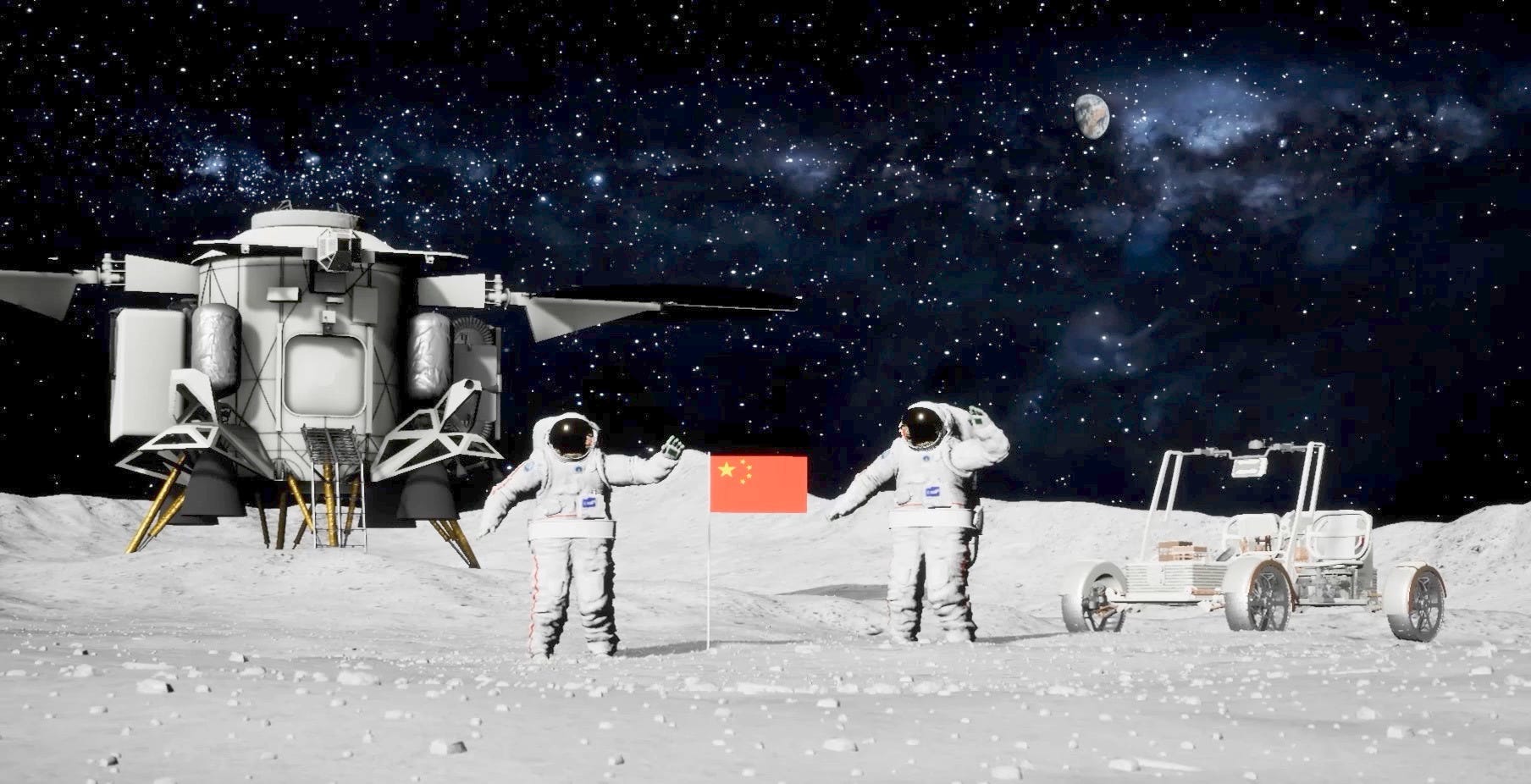China's Crewed Lunar Program Progressing Steadily
Efforts to send taikonauts to the Moon by 2030 are progressing as planned.
Ahead of this year’s Two Sessions (两会) in Beijing1, short reports were released regarding progress for China’s crewed lunar program. While quite short, the reports do provide insight into the program.
On March 4th, the China National Space Administration (中国国家航天局) shared a Xinhua report in which the China Manned Space Agency (中国载人航天工程办公室) informed reporters it would solidly promote the development and application of the major task of human lunar exploration. Through 2025, the space agencies aim to continue steady progress to meet the official deadline of by 2030 for the first crewed landings.
To enable the crewed lunar landings, development and testing are actively underway for the Long March 10 launch vehicle, Mengzhou (梦舟) crew capsule, Lanyue (揽月) lunar lander, Wangyu (望宇) spacesuit, and Tansuo (探索) rover. Construction of new launch and test facilities is also underway at the Wenchang Space Launch Site.
Additionally, Zhao Lei of China Daily outlined the current mission plan for China’s crewed Moon missions:
“The country's roadmap for its first manned lunar expedition involves two Long March 10 launches from the Wenchang spaceport to transport a Lanyue lunar lander and a Mengzhou manned spacecraft to lunar orbit.”
“After reaching their preset orbital positions, the Lanyue lander and the Mengzhou vessel will rendezvous and dock. Two crew members will enter the lander, which will then undock and descend toward the lunar surface for an engine-assisted soft landing.”
“On the moon, the astronauts will drive a Tansuo rover to carry out scientific tasks and collect samples. Upon completion of their assignments, they will return to the Lanyue module, which will fly them back to their spaceship waiting in lunar orbit.”
“In the final stage, the astronauts will carry the samples into the Mengzhou spacecraft, which will then undock and carry the crew back to Earth.”
Regarding crews, no one has been assigned to a lunar mission yet. But at the Chinese People’s Political Consultative Conference (中国人民政治协商会议), veteran taikonaut Wang Yaping (王亚平)2 was asked about plans for Moon missions, as she has expressed interest in heading to the Moon mulitple times. She responded that preparations were underway.
Taikonauts have reportedly begun training for lunar missions several months ago, initial missions are expected to have their crews consist of taikonauts who have spent several months in space. This training reportedly involves landing procedures and activities for surface operations, including collecting samples and deploying experiments.
As mentioned at the beginning, the Two Sessions are currently ongoing. The meetings of the Chinese People's Political Consultative Conference and the National People’s Congress (中华人民共和国全国人民代表大会) are expected to wrap up around ten days from now, by then a clearer outlook on this year’s policy, including space policy, will be shared. The China Aerospace Science and Technology Corporation’s 2025 ‘Blue Book’ is also expected to be released imminently, which will outline the space sector’s goals for the year.
China’s two sessions are annual meetings of the National People’s Congress (NPC) and the Chinese People's Political Consultative Conference (CPPCC). The NPC is China’s top legislative body and the CPPCC is the nation’s top political advisory body. Both are key in outlining and deciding nationwide policy.
Wang Yaping has flown onboard the Shenzhou-10 and Shenzhou-13 missions, spending a total time in space of 197 days.




Was the CASTC blue book released?